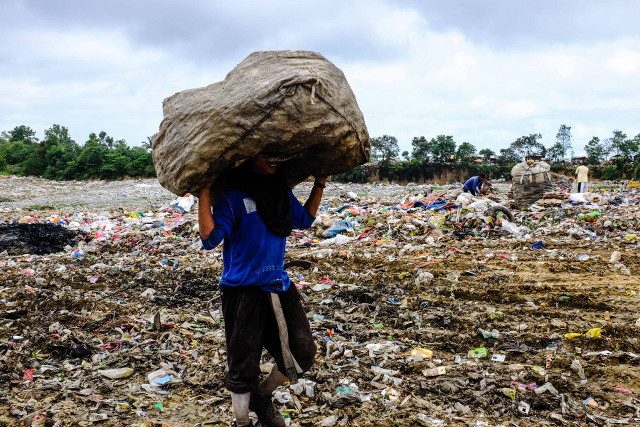SUMMARY
This is AI generated summarization, which may have errors. For context, always refer to the full article.

CAGAYAN DE ORO, Philippines – The city government of Cagayan de Oro has kicked off efforts to rehabilitate the city’s decades-old dumpsite to finally comply with the law requiring that dumpsites be replaced with sanitary landfills.
“The city [was] supposed to do away with its dumpsite in 2006, 6 years after the passage of the [Ecological Solid Waste Management] law, but, until now, we have no sanitary landfill,” said Edwin Dael, head of the City Environment and Natural Resources Office during a forum.
The city’s dumpsite, covering 17 hectares of land, was designed to hold 1.8 million cubic meters of garbage. But a recent figure showed the dumpsite now holds twice that amount – at least 4 million cubic meters.
Following the city’s plan, 4 hectares of the dumpsite will be closed for rehabilitation. The garbage will be compacted and piping for methane gas will be installed. It will undergo leeching and contouring to conform with standards for a sanitary landfill.
Compared to a dumpsite where garbage is thrown indiscriminately, a sanitary landfill is designed in a way that “exerts engineering control over significant potential environmental impacts arising from the development and operation of the facility.”
While the city rehabilitates the dumpsite, it will pursue feasibility studies to find alternative locations for a new landfill in different villages, said City Information Office head Maricel Casino Rivera.
Of the city’s proposed P30 million ($680,000) budget for solid waste management this year, P13 million ($295,000) has been earmarked for the feasibility studies.
Initiatives to improve and eventually replace open dumpsites are long overdue. The deadline set by the Solid Waste Management Act for the closure of open dumpsites was 9 years ago.
Only around 26% of local government units nationwide implement the 14-year-old garbage law despite the increasing garbage generation in the country’s urban areas.
Long overdue
But even before the current administration of Mayor Oscar Moreno, there were already plans to put up a sanitary landfill.
In 2011, under Mayor Vicente Emano, the city bought land in Sitio Pamalihi, Pagatpat, covering 37 hectares. It was supposed to be the site of a sanitary landfill after the city received an authority to close the current dumpsite from the Department of Environment and Natural Resources (DENR) in 2010.
But the plans were put on hold because it lacked an Environmental Compliance Certificate from the DENR, a document meant to prove the project will not harm the environment and citizens.
Dael shared that before Mayor Moreno took the helm of the city in 2013, there had been orders given to the city by the DENR for compliance of the said law.
Health threat
City health officials are relieved that the dumpsite may be closed soon, given the health hazards it presents to the community.
“We are really close to declaring a health emergency in the city due to the rising cases of respiratory-related illness,” said city health officer Dr Fe Bongcas.
The dumpsite is located 3.7 kilometers from the center of the city, she said. New villages less than a kilometer away had to be closed for health reasons.
In several occasions during the summer season, the city had to put out fires in the dumpsite after methane gas generated by compacted garbage ignited into flame.
Thus, the dumpsite poses threats not just to residents of nearby villages but the at least 1,700 scavengers and garbage workers making a living in the dumpsite itself.
The city health department also found toxic metals in the dumpsite including cadmium, a dangerous metal found in batteries.
Thomas Kellenberger, founder of a non-governmental organization that works with scavengers, said his group The Philippine Island Kids Foundation has recorded several deaths in the dumpsite due to exposure to health hazards.
The group provides P2 million ($45,000) annually for health services but Kellenberger says the city government must provide more and keep the scavengers off the dumpsite.
The city government should get the scavengers’ input when planning the fate of the dumpsite since they depend on it as their source of daily income, he added. The government should be ready to provide an alternative source of income.
Nestor Banauag Jr, member of the technical working group for the site, said that a new landfill wont be enough to solve the city’s garbage woes.
To do this, the entirety of the Solid Waste Act must be followed.
“Grassroots participation must be enhanced. As part of at-source segregation, people must learn how to separate their garbage,” he said. – Rappler.com
Add a comment
How does this make you feel?
There are no comments yet. Add your comment to start the conversation.